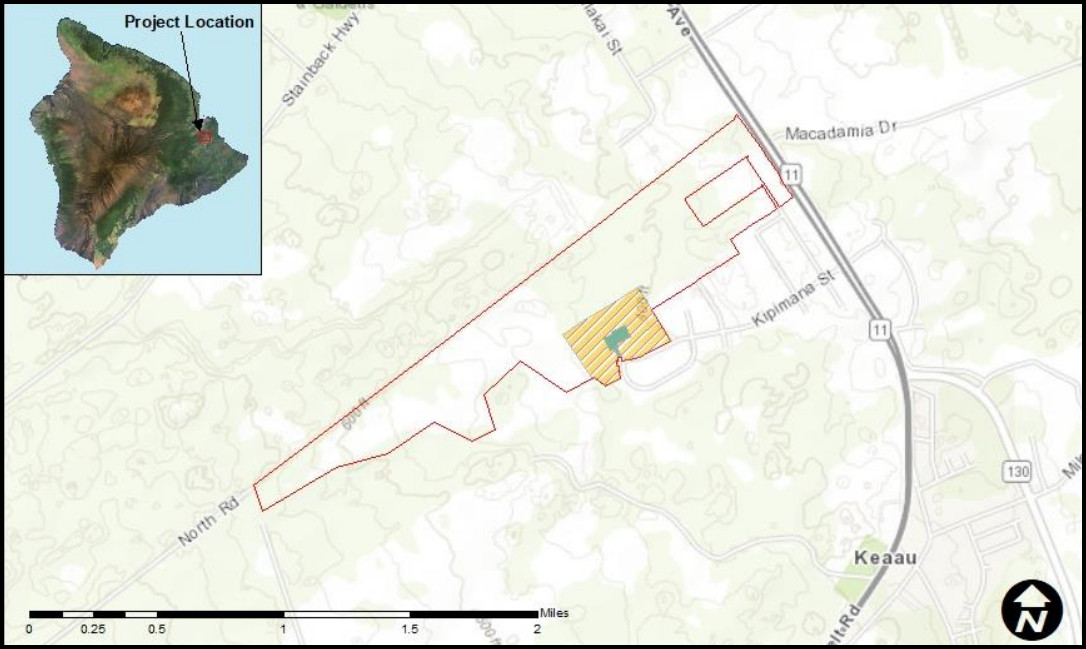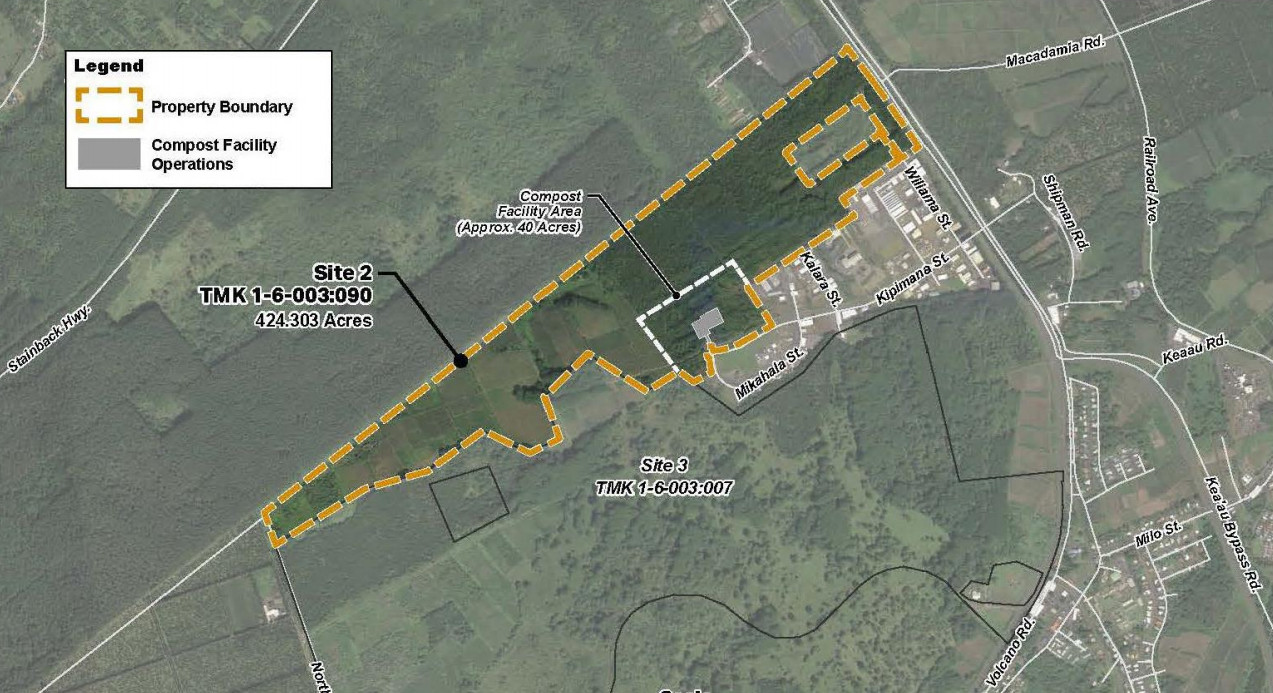
image courtesy Final EA for East Hawaii Organics Facility
(BIVN) – The long-discussed East Hawaiʻi Organics Facility will be constructed on the north side of the W.H. Shipman Business Park in Keaʻau, and will have no significant impact according to the final environmental assessment document published for the project.
The County of Hawaiʻi Department of Environmental Management Solid Waste Division proposes to build the facility on 3 acres within the approximately 40-acre parcel. Access to the facility would be via the primary road within the W.H. Shipman Business Park, Kipimana Street, the final EA says.
“The Proposed Action is intended to divert green waste and designated organic materials from the South Hilo Sanitary Landfill and the West Hawaiʻi Sanitary Landfill by establishing Hawaiʻi County’s first municipal composting operation,” the document reads. “This is especially important since the South Hilo Sanitary Landfill is expected to reach its permitted maximum capacity within the next two years, and the County has initiated final closure procedures in compliance with State and Federal regulatory requirements on landfill closures.”
In November, County environmental management officials gave a presentation to the Hawaiʻi County Council.
Video by David Corrigan, published November 19, 2018.
The Final EA, prepared by SSFM International, Inc. and posted to the state Office of Environmental Quality Control website on December 23, goes into greater detail about the preferred facility location and contains some revised information.
Under the heading “Need for the Proposed Action”, for example, this language was inserted:
In 2017, House Bill No. 1577 was introduced in the State of Hawaiʻi Legislature. This bill requires that the Department of Agriculture establish a three year compost reimbursement pilot program to provide reimbursements to farmers and ranchers when purchasing compost from a certified processor, dealer, retailer, or wholesaler licensed to do business in the state. The bill was passed on July 5, 2018 (Act 089).
There are also some new paragraphs under “Environmental Controls”, such as:
- Storm Water Mitigation: “During rain events, runoff would be directed to an on-site stormwater system. Stormwater would flow through the use of site grading into surface swales towards a stormwater retention pond.”
- Odors: “…the raw materials being moved from the receiving building to compost heaps will be exposed for a short duration and covered immediately.”
- Leachate: “Leachate generated by the composting process would be contained in a closed loop system and used for feedstock and moisture conditioning.”
- Rapid ʻŌhiʻa Death: “… the disposal of ʻŌhiʻa cuttings would be prohibited and signs would be installed urging the public to not dispose of any ʻŌhiʻa cuttings.”
- Little Fire Ants: “…all mulch would be heat treated prior to being made available to the public. Prior to full operations, mulch generated from the processing of green waste and untreated pallets would be placed in open windrows to compost the material for a minimum of 15 days at internal temperatures of a minimum of 131 degrees Fahrenheit, which would kill any little fire ants that may be present. The mulch would be turned inside and out a minimum of five times during the 15 day treatment to maintain aerobic conditions within the pile and to control internal temperatures. When the in-vessel composting system is in place, the same process will occur in-vessel, but the results can be obtained within a 72-hour period instead of 15 days.”
The document says that “more specific operational details will be presented and elaborated as part of the application for the Solid Waste Management Permit.”


by Big Island Video News7:58 am
on at
STORY SUMMARY
KEAʻAU, Hawaiʻi - The full-scale compost facility will be constructed on the north side of the W.H. Shipman Business Park in Keaʻau.